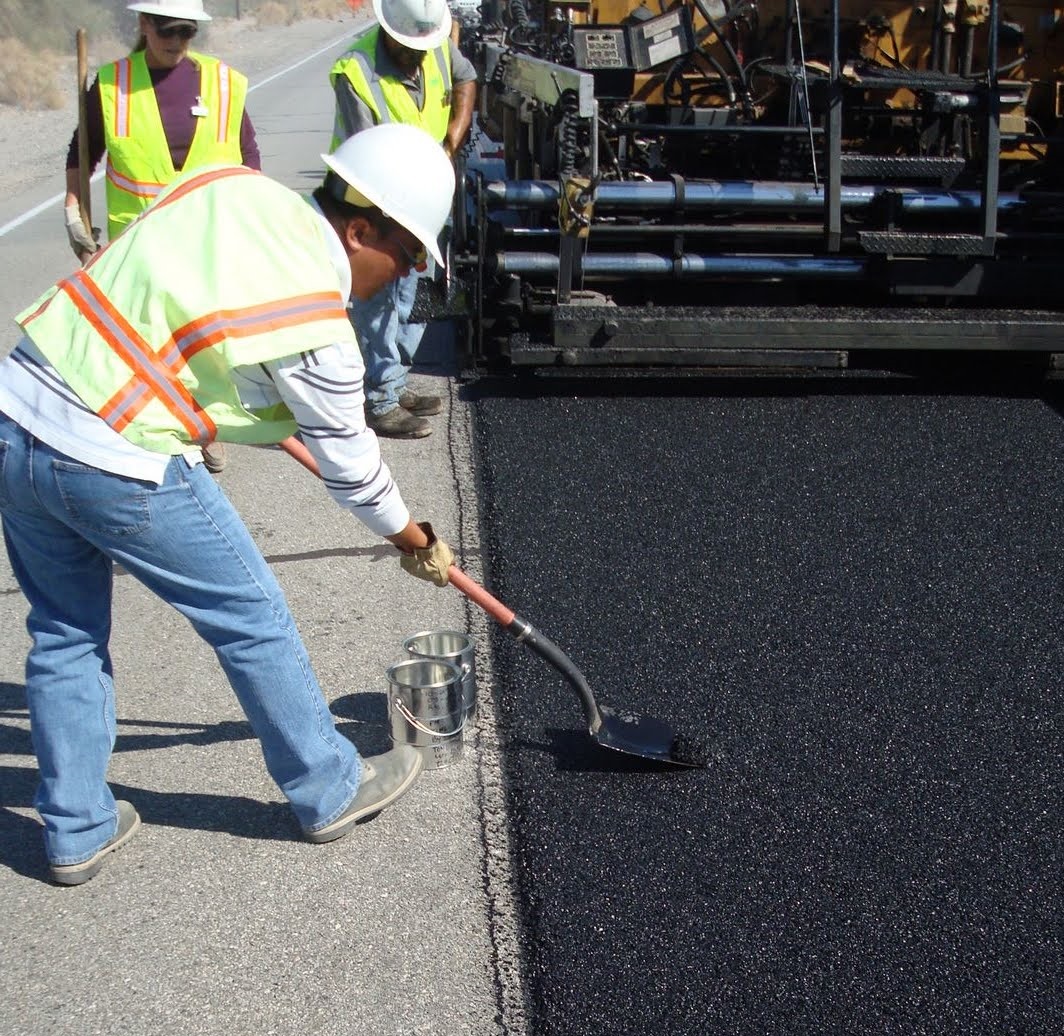On any road construction project, there will be one or more inspectors assigned to check that work is being done to specifications, collect material samples if needed, and monitor progress. But what are inspectors looking for, exactly? It’s not intended to be a mystery; their focus is on making sure that the road is built with quality construction materials and that best practices are followed during the road construction process. In this edition of the RoadReady newsletter, we’ll look at some of the concepts and activities involved in project inspection.
Inspection Roles and Functions
A variety of people may be involved in project inspection activity, either through the contractor building the road or with the agency that owns the road. Inspecting the quality of the work is naturally an important issue for the agency, but contractors can also have pay incentives tied to quality and be involved with inspections, depending on the type of project and specifications involved. For example, a QC/QA specification involves a combination of quality control (QC), for which inspections and testing are performed by the contractor, and quality assurance (QA) by the agency to validate the contractor’s results.

Regardless of the parties involved, one key aspect is that inspectors are in a separate chain of command from the crews who are actually building the road. They are there to monitor and observe, rather than to give directions. If inspectors notice an issue that requires action on the part of the construction crew, they can communicate with a designated representative on the contractor’s team, such as a project foreman, with the authority to make decisions and direct workers accordingly.
Observation and Sampling
When construction activity is ongoing, project inspectors commonly spend virtually all of their working hours in the field, observing the work and collecting material samples as needed. A single construction project often creates a full workload for an inspector, and large or complex projects may require more than one. Responsibilities are also sometimes divided between an inspector from the field office, who observes and reports on construction activity, and a technician from the laboratory, who oversees collection and testing of samples. In addition, chief inspectors or project managers may oversee an inspection team or coordinate inspection work across multiple projects.
What are inspectors looking at? It can depend in part on what element of the project they are looking at, but inspection observations generally have a common purpose, which is to review compliance with project plans, materials, and specifications. This includes use of proper work procedures, approved materials and locations, and following work zone safety requirements.

As an example, construction materials are commonly checked by taking physical samples and performing tests to determine whether they will meet specifications. Technicians and inspectors normally follow defined protocols to ensure that material samples are representative and to detect any significant variability in the material. Some material characteristics an inspector may be able to check with a simple test in the field, while evaluating other material properties will require more sophisticated laboratory testing. Inspectors will also often need to take various field measurements, such as a temperature reading or pavement density reading, to check that construction is performed according to specifications or to document project progress.
Inspection Documentation
If you ask an inspector which of their observations need to be documented, they would probably tell you, “All of them.” Essentially, inspection documentation should include anything that might impact the construction or performance of the road being built. This extends beyond construction activity to factors ranging from site characteristics to weather conditions to traffic control. Inspectors are often also responsible for documenting essential information about project operations, such as the composition of work crews and equipment, or quantities of construction materials as they are placed or removed. This documentation may be needed to allocate contractor payments, track progress, or serve as evidence if questions about the work arise later on.
The typical standard used by most agencies is that inspectors should file daily reports so their supervisors can review the information quickly and address any concerns related to the project promptly. Inspectors should also be able to contact their supervisors directly for issues that require more immediate attention. Historically, documentation involved paper records such as project diaries, inspection reports, and notes in field books. As technology improves, agencies are looking for ways to capture more of that information directly in electronic form.
Creating Confidence in Construction Quality
As we said, inspections aren’t supposed to be about mysterious or secret criteria, everything inspectors look for is in the plans and specifications. And in a sense, having inspectors there to observe is designed to keep good work from staying a secret. Inspections play a critical part in making sure the agency, and in turn the general public that uses the road, can have confidence in the quality of its construction. When a construction project produces a quality pavement, that’s something to be proud of, and you want everyone to know about it.


i really love learning a lots from this wonderful newsletter. thanks for the good work.
Road Inspectors should also look into the following:
– Temperature of screed vibrator of the paver (before the paving operations begin)
– String lines set up for paving thickness and profile
– Joints (both transverse and longitudinal) by using a straight edge
– Any segregation in the paved mat and thereby initiating corrective measures
– Uniform coating of bitumen over the aggregate particles
– Excess prime / tack that might result in bleeding
– Proper treatment of core holes before building the subsequent layer
– Proper cleaning of trucks before they tip into the paver (to avoid contamination)
–
Good reading material. Always looking at different articles to learn new information, etc. Thanks.
There is this new technology from Malaysia for pavement construction. Can these inspection guidelines apply, since the technology does not use bitumen and asphalt?